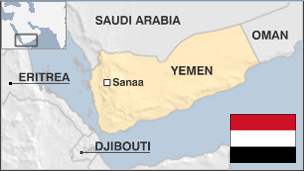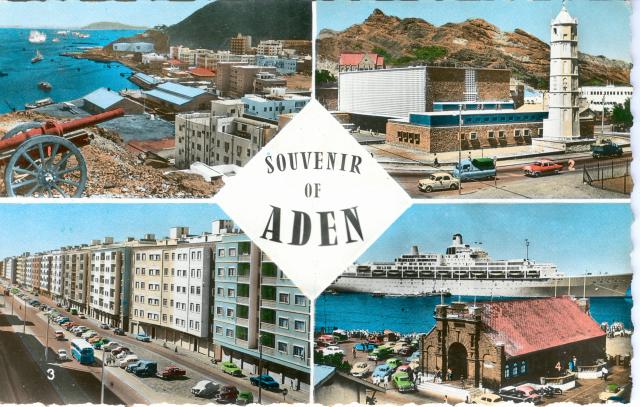Background
From 1967 to 1990, South Yemen (The People’s Democratic Republic of Yemen) existed as an independent state, with the strategic port of Aden serving as its capital. To the northwest was the Yemen Arab Republic, or North Yemen, with its capital in Sanaa. In 1990, North and South Yemen put aside our differences and united to create the modern day Republic of Yemen, with its capital in Sanaa. As part of the new unity government, it was agreed that North Yemen’s President, Ali Abdullah Saleh, would become president of the new republic, and South Yemen's president, Ali Salim al-Beidh, would become vice president and government representation will be 50/50.
When the unification of South and North Yemen was declared in 1990, south Yemenis thought that they had finally succeeded in achieving their old slogans that called for safeguarding the Yemeni revolution, unity, and democracy. But that all fell apart when the north began immediately systematically marginalizing southerners and looting southern natural resources.
Civil war broke out in 1994 https://en.wikipedia.org/wiki/Yemeni_Civil_War_(1994)
The economic and political gains accrued by Saleh and his allies in North Yemen after unification meant that they could not let the south slip from their hands under any circumstances so unity was then imposed by force.
Unity by force is an occupation of South Yemen.
After the war of 1994 the south was seen as "spoils of war" and the elite of the north can do to the south as they please. So Saleh and his allies from the Islah party (Muslim Brotherhood, Alqaeda) began a campaign of assassinations of southern leaders, military officers, and activists. After the campaign of assassinations, thousand of military checkpoints were set up throughout the south and were ordered to kill and/or imprison secessionists.
Also, former president Ali Abdullah Saleh and his allies from the Islah party (Muslim Brotherhood) settled and financed Alqaeda (AQAP) in South Yemen in order to subdue southerners and keep South Yemen in shambles while northern security forces enforced the full occupation of South Yemen and Saleh and his allies looted southern land and resources.
http://foreignpolicy.com/2015/01/21/playing-a-double-game-in-the-fight-against-aqap-yemen-saleh-al-qaeda/
http://www.middleeasteye.net/news/yemeni-officials-under-ex-president-saleh-worked-al-qaeda-1801873681
46 governmental and public sector institutions and establishments were forcibly seized by the northern security forces, including the Monetary Authority and the General Establishment for Flour Mills.
More than 28 southern-owned factories were appropriated by the northern government, including manufacturers of textiles, dairy products, and agricultural equipment.
11 mixed private-public and privately-owned production plants were also seized, in addition to around 33 state-owned farms with a total area of approximately 28,000 acres, scattered throughout the southern provinces. The 56,000 employees of these establishments were fired.
86 agricultural and service cooperatives were confiscated, in addition to properties owned by agricultural associations. Their members, who are estimated to number around 16,449, were in turn denied access. Similarly, the fishing fleet belonging to the People's Democratic Republic of Yemen was looted, having once been the second largest Arab fleet of its kind.
Stealing southern oil- there are 80 oil companies operating in South Yemen, mostly owned by northern figures, and were established under the direct orders of President Ali Abdullah Saleh.
To make sure occupation of South Yemen was effective northern government disbanded the armed forces of the southern state and dismantled their capabilities, which were composed of 58 brigades and 14 battalions.
Mandatory retirement was forced upon 467,649 employees of the army, without giving them retirement benefits.
Confiscation of 42% of southern land specifically in Aden and the relocation of hundreds of thousands of northerners to the south in order to alter the demographic landscape of the south.
25 years of looting southern resources from oil and gas to agriculture and fisheries.
That's on top of constant killing of southerners and attacks on southern cities and villages by northern forces.
Southerners were not only seeing themselves being marginalisation by the north - both economically and politically but their land being raped back into the stone age. Northern culture brought rampant corruption, poor governance, poverty, regional rivalries and religious differences which was not present in the south before unity. The big divided in cultural ideology can still be seen today. Northerners have this secession phobia. There dependency on the south at any expense can still be seen today even after all that has happened in 2015.
When the unification of South and North Yemen was declared in 1990, south Yemenis thought that they had finally succeeded in achieving their old slogans that called for safeguarding the Yemeni revolution, unity, and democracy. But that all fell apart when the north began immediately systematically marginalizing southerners and looting southern natural resources.
Civil war broke out in 1994 https://en.wikipedia.org/wiki/Yemeni_Civil_War_(1994)
The economic and political gains accrued by Saleh and his allies in North Yemen after unification meant that they could not let the south slip from their hands under any circumstances so unity was then imposed by force.
Unity by force is an occupation of South Yemen.
After the war of 1994 the south was seen as "spoils of war" and the elite of the north can do to the south as they please. So Saleh and his allies from the Islah party (Muslim Brotherhood, Alqaeda) began a campaign of assassinations of southern leaders, military officers, and activists. After the campaign of assassinations, thousand of military checkpoints were set up throughout the south and were ordered to kill and/or imprison secessionists.
Also, former president Ali Abdullah Saleh and his allies from the Islah party (Muslim Brotherhood) settled and financed Alqaeda (AQAP) in South Yemen in order to subdue southerners and keep South Yemen in shambles while northern security forces enforced the full occupation of South Yemen and Saleh and his allies looted southern land and resources.
http://foreignpolicy.com/2015/01/21/playing-a-double-game-in-the-fight-against-aqap-yemen-saleh-al-qaeda/
http://www.middleeasteye.net/news/yemeni-officials-under-ex-president-saleh-worked-al-qaeda-1801873681
46 governmental and public sector institutions and establishments were forcibly seized by the northern security forces, including the Monetary Authority and the General Establishment for Flour Mills.
More than 28 southern-owned factories were appropriated by the northern government, including manufacturers of textiles, dairy products, and agricultural equipment.
11 mixed private-public and privately-owned production plants were also seized, in addition to around 33 state-owned farms with a total area of approximately 28,000 acres, scattered throughout the southern provinces. The 56,000 employees of these establishments were fired.
86 agricultural and service cooperatives were confiscated, in addition to properties owned by agricultural associations. Their members, who are estimated to number around 16,449, were in turn denied access. Similarly, the fishing fleet belonging to the People's Democratic Republic of Yemen was looted, having once been the second largest Arab fleet of its kind.
Stealing southern oil- there are 80 oil companies operating in South Yemen, mostly owned by northern figures, and were established under the direct orders of President Ali Abdullah Saleh.
To make sure occupation of South Yemen was effective northern government disbanded the armed forces of the southern state and dismantled their capabilities, which were composed of 58 brigades and 14 battalions.
Mandatory retirement was forced upon 467,649 employees of the army, without giving them retirement benefits.
Confiscation of 42% of southern land specifically in Aden and the relocation of hundreds of thousands of northerners to the south in order to alter the demographic landscape of the south.
25 years of looting southern resources from oil and gas to agriculture and fisheries.
That's on top of constant killing of southerners and attacks on southern cities and villages by northern forces.
In 1990 north and south Yemen united to become the Republic of Yemen.
After years of patients and hope for prosperity, in 2007 the people of South Arabia (AKA South Yemen) said enough is enough and took to the streets in peaceful protest (known as southern movement) demanding secession from the Republic of Yemen.
Protest was met with government forces (all northerners) committing cold-blooded murder of unarmed civilians of some 2000 southerners before the war in March 2015 even started.
Aden was once rated one of the worlds top cities. Southerners envisage a revival of their beloved Aden to once again be a beacon for the world.
Arabia AKA South Yemen before unity in 1990
https://www.youtube.com/watch?v=XQYGejoCDpA
Today south yemeni arabs peacefully demonstrate for their right to self rule.
https://www.youtube.com/watch?v=IPpROZu6lWA
However south yemen/arabia is being silenced and sidelined by the yemeni elite.
Background
 Reviewed by S
on
7:15:00 PM
Rating:
Reviewed by S
on
7:15:00 PM
Rating:
 Reviewed by S
on
7:15:00 PM
Rating:
Reviewed by S
on
7:15:00 PM
Rating:








